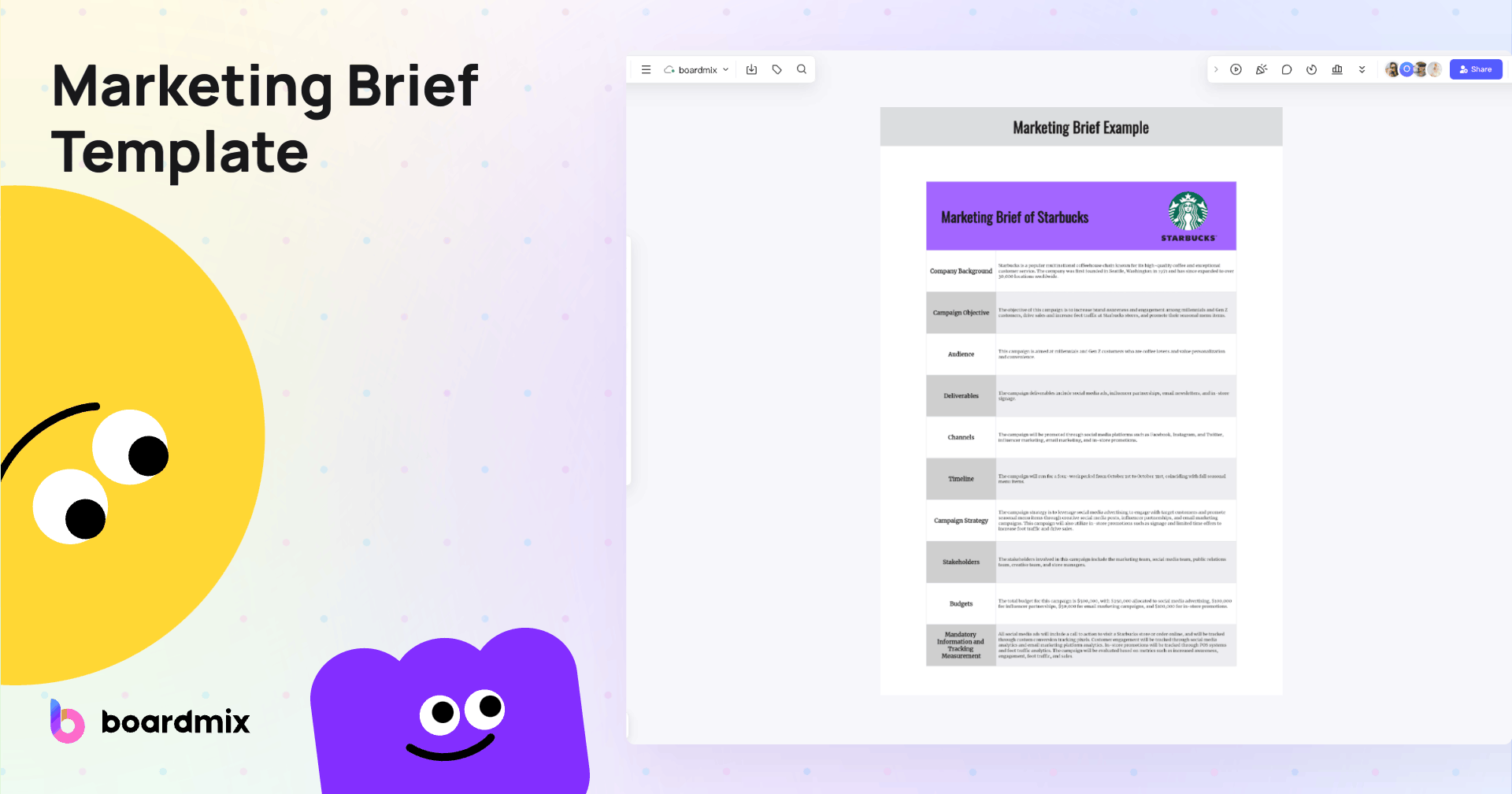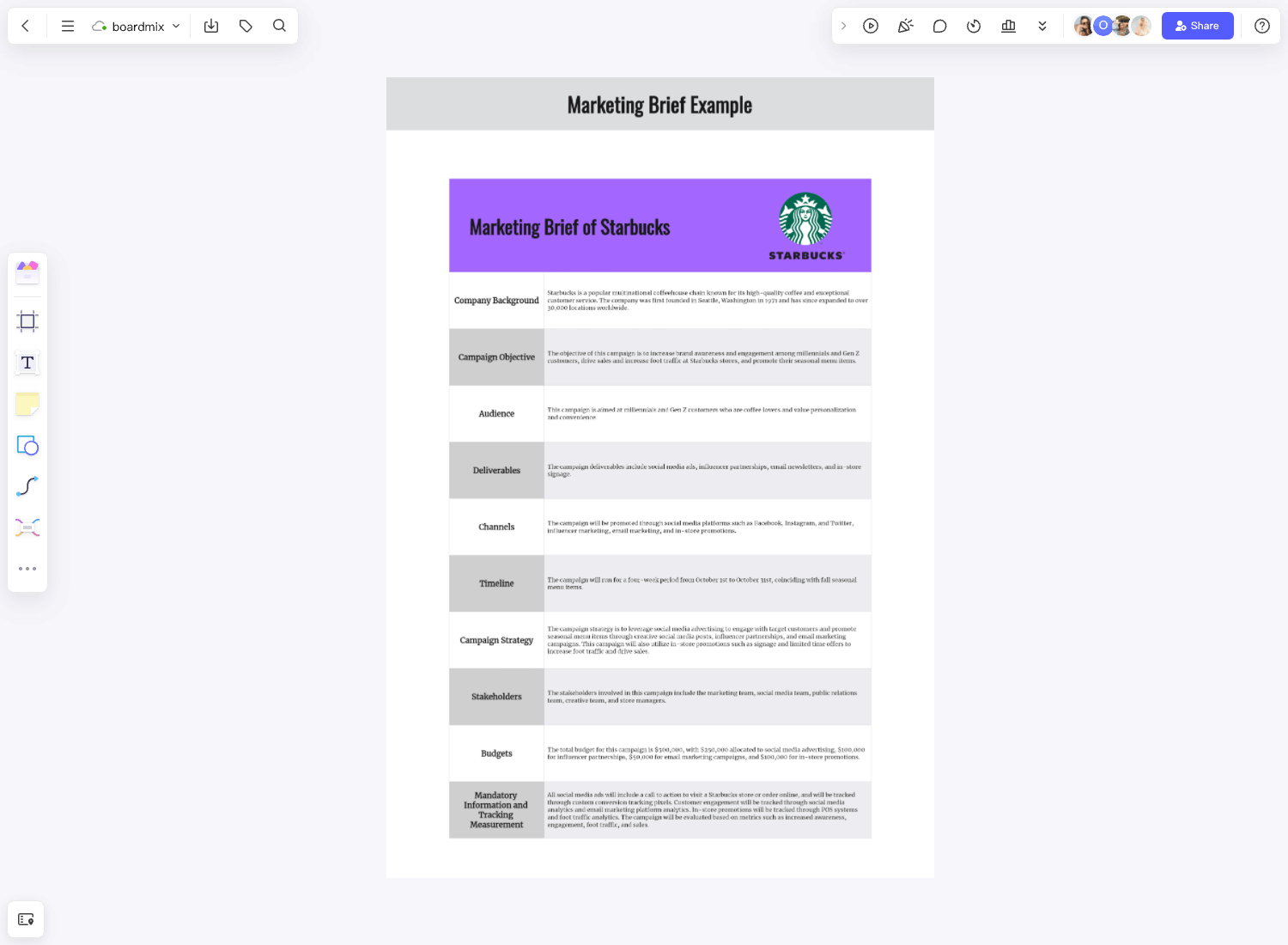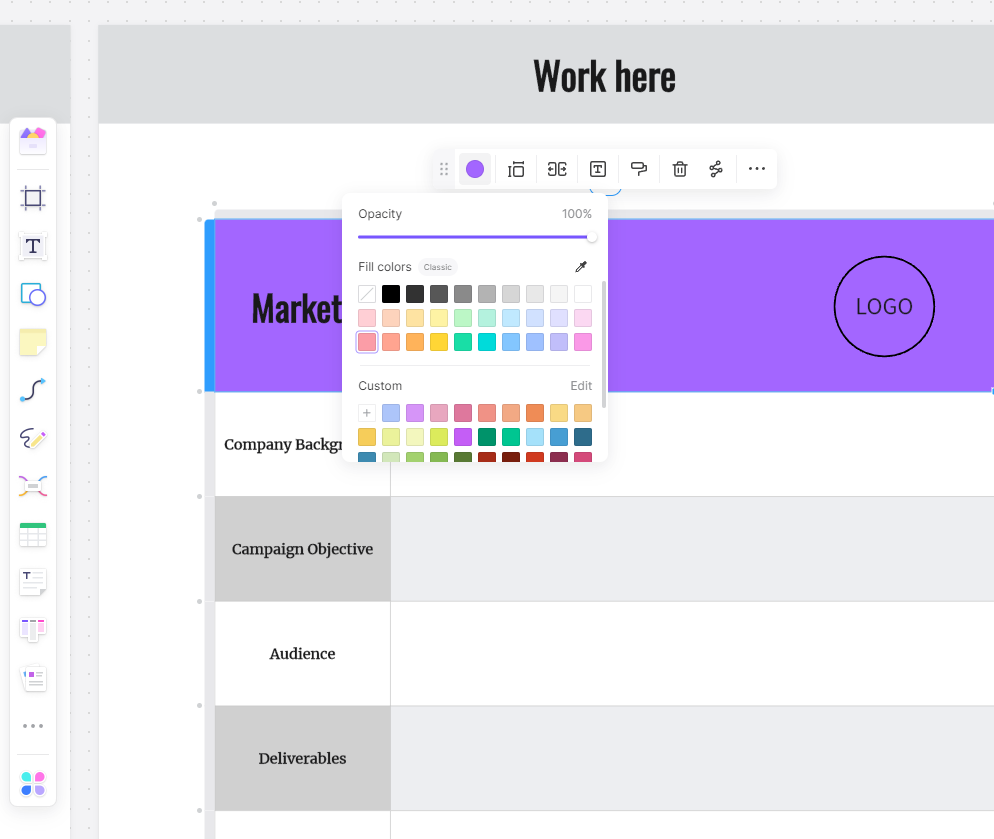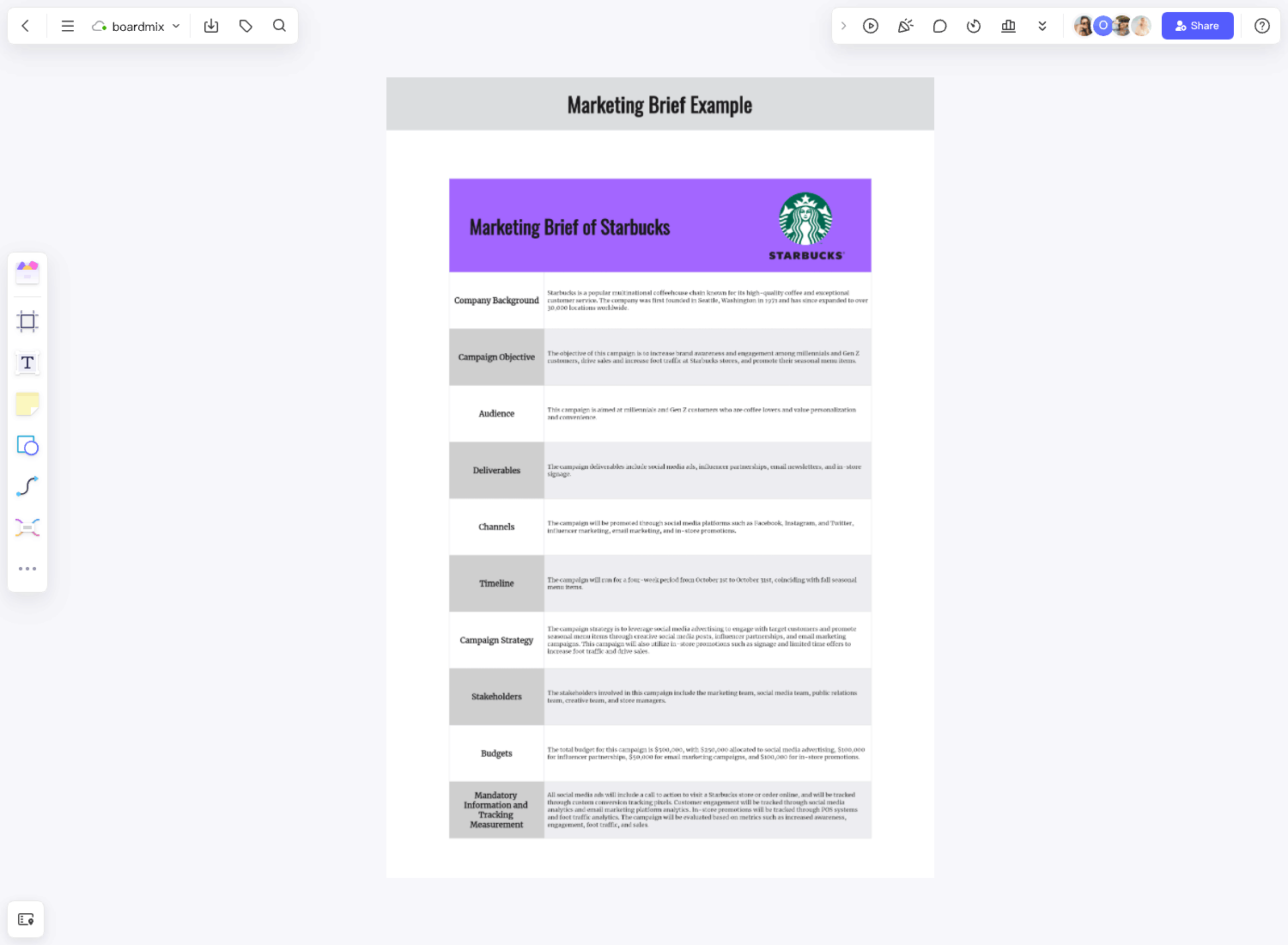Every company spends a considerable budget on ads and promotions to effectively reach its target audience. However, companies refer to a marketing brief before these initiatives get passed. A defined and thorough plan helps a project run efficiently before starting the campaign.
What is a marketing brief?
A marketing brief refers to a document outlining a marketing campaign so all stakeholders will have similar information while working on the project.

It helps marketing teams plan creative strategies and keep executives and other parties involved informed. The brief has deadlines and client information in one section for easy access. Also, the marketing campaign brief prevents businesses and teams from working individually.
What should be included in a marketing brief?
When writing an excellent marketing campaign brief, businesses must consider a few essential things.
- Project details. The basic project details include the project name, brand, timelines for each project stage, and its final due date. It might also be beneficial to have the author of the marketing brief, the approver, and the person requesting the work.
- Channels. This includes the platforms where you place your marketing campaign. If you're using landing pages, indicate them early to save time.
- Budget. The campaign can only proceed with a budget. Ensure to specify it in your marketing campaign brief. You don't want to go back and forth since the budget is too little to achieve your project goal.
- Product details. The data you place here are additional details that may be useful to sell the brand effectively. This can include unique features of the product.
- Commercial context. Identify the business opportunities, goals, and the problem your product aims to solve when writing the marketing campaign brief. Here, you can also include competitive statistics, commercial history, or market dynamics.
- Audience information. This refers to the group of people your project is trying to reach.
- Desired response from the target audience. Identify the specific action your company wants from the target audience.
- Insight into your target audience. Ensure to determine what your audience is thinking as they use your product.
- Brand guidelines. Build your brand's consistency, ensuring you position your brand logo, color, and images accordingly.
- Measurable results. Remember to include the metrics to measure the project's success in your marketing campaign brief.
How to write a marketing brief?

- Identify the project's purpose. In the marketing campaign brief, you must state what the business aims to fulfill with the campaign.
- Gather insights from team members. It won't be advisable to develop the marketing campaign brief alone. You can get feedback from other departments and stakeholders for a more diverse document.
- Set goals. The goals in the marketing campaign brief must be specific and clear. They can also be challenging but attainable.
- Determine the target audience. This lets you develop initiatives and strategies effectively.
- Provide an outline of the marketing strategy. You can discuss the overall tone and theme of the campaign, channels, and media for publicity.
- List all the deliverables. These include the project stages and tasks needed to complete the project.
- Remember to confirm the budget. There must be budget estimates for every section of the campaign.
How do you write a marketing client brief?
Writing a marketing client brief requires a keen understanding of the client's needs, goals, and target audience. It's about gathering key information and presenting it in a concise, clear, and compelling manner.
Firstly, start with a brief introduction of the client's business. This should encapsulate what they do, their mission statement, and their unique selling proposition (USP). It's essential to accurately portray the essence of the business as this sets the tone for the rest of the brief.
The next step is to outline the objectives of the marketing campaign. What is it that the client wants to achieve? Is it increasing brand awareness, driving more website traffic, boosting sales, or perhaps enhancing customer engagement? Be specific and make sure these goals are SMART - Specific, Measurable, Achievable, Relevant, and Time-bound.
Then comes understanding and defining the target audience. Who are they? What are their demographics? What are their interests and behavior patterns? The more detailed your understanding of the target audience is, the better you can tailor your marketing strategy to resonate with them.
Afterward, detail out any specific strategies or tactics that have been discussed with or suggested by the client. These could include specific digital marketing strategies like SEO or PPC campaigns, traditional marketing methods like print ads or TV commercials, or perhaps a blend of both.
Also important is stating the budget for the project. This gives an idea of what resources are available for executing the marketing campaign. Include any constraints or limitations that need to be taken into consideration.
How do you write a good advertising brief?
Writing a good advertising brief requires a clear understanding of the product or service, the target audience, and the objectives of the advertising campaign. Here's a step-by-step guide:
-
Introduction: Start by giving an overview of the company, product, or service. This should include information about what makes it unique and what its unique selling proposition (USP) is.
-
Objectives: Clearly state what you want to achieve with this advertising campaign. Are you looking to increase brand awareness? Do you want to drive more sales? Or perhaps you're launching a new product and want to create buzz around it? Be specific and make sure your objectives are measurable.
-
Target Audience: Define who your target audience is. Include demographic information such as age, gender, location, and income level, as well as psychographic information such as interests, attitudes, and lifestyle. The more detailed your understanding of your target audience is, the better you can tailor your advertising message to resonate with them.
-
Key Message: What is the key message that you want to communicate through this advertising campaign? This should be concise, compelling, and aligned with your brand values.
-
Tone and Style: Define the tone and style of the advertisement. Should it be humorous or serious? Modern or traditional? This will depend on your brand personality and what appeals to your target audience.
-
Media Channels: Specify which media channels you plan to use for this advertising campaign. This could include print media, television, radio, online platforms, social media, etc.
-
Budget: Provide an overview of the budget for this advertising campaign. This will help in planning resources efficiently.
-
Timeline: State when the campaign will start and end, along with any key milestones in between.
Marketing Brief Example
Here's a simplified example of a marketing brief for a fictional product launch:

Marketing Brief: XYZ Tech's New Product Launch
1. Background and Context:
XYZ Tech is a leading technology company specializing in innovative solutions.
Launching a new product, a smart wearable fitness tracker named "FitGadget."
The market is competitive with a focus on health and wellness technology.
2. Objectives:
Increase brand awareness for FitGadget by 30% within the first quarter.
Achieve a 20% increase in online pre-orders during the launch month.
Position FitGadget as a premium, user-friendly fitness tracker.
3. Target Audience:
Demographic: Health-conscious individuals aged 25-40.
Psychographic: Tech-savvy, fitness enthusiasts seeking convenience.
Geographic: Initially targeting the North American market.
4. Key Messages:
"FitGadget: Your Fitness Companion."
"Seamless Integration of Technology and Wellness."
"Track, Analyze, and Achieve Your Fitness Goals with Ease."
5. Strategies and Tactics:
Utilize social media (Facebook, Instagram, Twitter) for teaser campaigns and engagement.
Collaborate with fitness influencers for product endorsements and reviews.
Launch a user-friendly website with informative content and an easy-to-use pre-order system.
6. Budget:
Social media advertising: $50,000.
Influencer partnerships: $20,000.
Website development and maintenance: $30,000.
Total Budget: $100,000.
7. Timeline:
Teaser Campaign on Social Media (Month 1).
Influencer Collaborations (Month 2).
Website Launch and Pre-order Availability (Month 3).
8. Measurement and Evaluation:
Metrics: Social media engagement, website traffic, pre-order numbers.
KPIs: 30% increase in brand awareness, 20% increase in pre-orders.
Tools: Google Analytics, Social Media Insights.
9. Creative Considerations:
Branding: Modern and energetic.
Visuals: High-quality images showcasing the product in real-life scenarios.
Messaging: Emphasize the convenience and advanced features of FitGadget.
10. Approval Process:
Marketing Manager to review and approve all campaign materials.
CEO to provide final approval before launch.
This example provides a basic structure for a marketing brief, outlining key elements such as background, objectives, target audience, key messages, strategies, budget, timeline, and measurement. Adjust the details based on the specific needs and characteristics of the product or campaign you are working on.
How to write a marketing brief with Boardmix
Access the Marketing Brief Template: Log into your Boardmix account and navigate to the templates section. Select the Marketing Brief Template.

Customize Your Template: Start filling in the template with your specific information. You can customize each section according to your needs, add or remove elements, and even change colors or fonts if desired.

Collaborate with Your Team: Invite team members to join your board and collaborate in real time. They can add their inputs, make edits, or leave comments.

Save and Share: Once you've completed your marketing brief, save it for future reference or share it directly with stakeholders from within Boardmix.
Review and Update: As your campaign progresses, revisit your marketing brief to update any changes or track progress against objectives.
FAQs about marketing brief
What is the purpose of marketing briefs?
A marketing campaign brief is a blueprint that presents an in-depth overview of a marketing initiative's goals, concepts, and details.
What is the difference between a marketing brief and a creative brief?
A marketing campaign brief is broader as it covers more complex organizational goals like driving sales and increasing brand awareness. Meanwhile, a creative brief focuses on project-specific objectives.












